icon
password
Multi-select
tags
ID
type
status
slug
summary
category
date
Author
URL
Even among many Chinese vinegar, "aged vinegar" is unique. Until the 21st century, it still maintained the most primitive production method like wine. This makes it taste more than "sour".
“Your vinegar is really exquisite.”
“That’s right! Let’s put it this way, I made these dumplings exactly for tasting this vinegar. ”
In 2017, Jiang Wen left such an intriguing dialogue in his film Hidden Man.
To most non-Chinese viewers, this line seems to be just an inexplicable paranoid speech, but for most Chinese viewers, it is enough to make the corners of their mouths rise into a subtle arc:
Chinese vinegar is so exquisite, and the most exquisite of Chinese vinegar, needless to say, is the traditional vinegar(Old Aged Vinegar, 老陈醋) from Shanxi.
Yesterday of traditional vinegar
As one of the oldest condiments in China, traces of classical Chinese vinegar workshops appeared in the Central Plains as early as the 8th century BC, and in the ancient Chinese agronomic book QiMin YaoShu, which was written in the 6th century AD, the raw materials and production methods of more than 20 kinds of Chinese vinegar are recorded in detail.
It is on this basis, with the continuous improvement of microbial theory and brewing technology, that traditional Chinese vinegar, which was born thousands of years ago, has been passed on all the way to this day on the premise of maintaining the basic technological prototype. This is the reason why traditional Chinese vinegar is also called “Old Aged Vinegar”(老陈醋).
Unlike the English etymology of “vin aigre”, which stands for “sour wine”, Chinese vinegar has a formula that uses honey and black plum as the main raw materials at the beginning. But until now, the main raw materials of traditional vinegar have always been cereal crops, including millet, glutinous rice and sorghum-the most well-known contemporary versions of aged vinegar in China are basically sorghum brewed versions.
On the other hand, from the point of view of the production process, the technological steps of old aged vinegar are indeed very similar to those of wine-making, both of which include the production of monosaccharides into alcohol (or alcohols) using yeasts, but after that, aged vinegar also adds the steps of using a large number of acetic acid bacteria to convert alcohols into acetic acid, as well as cellar aging.
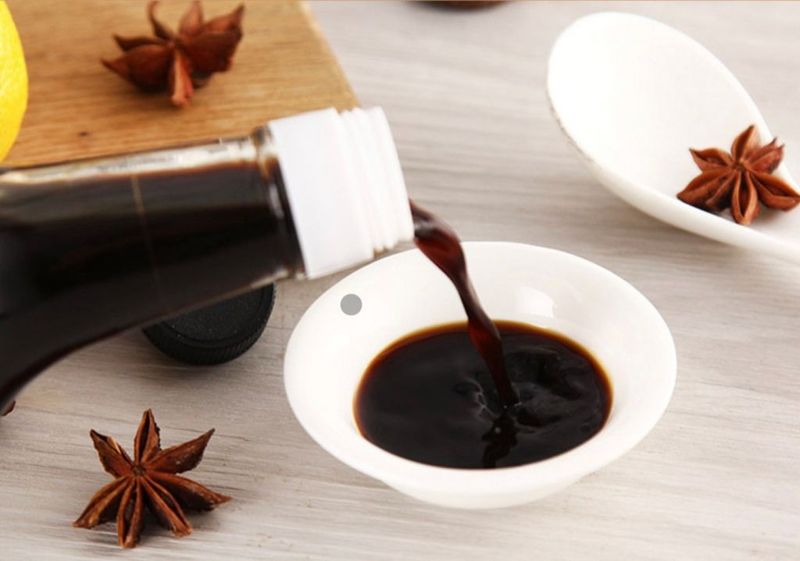
Aged vinegar is darker in color and denser, with aroma in addition to sour taste.
In fact, before QiMin YaoShu was written, there was an obvious intersection between the workshops of traditional Chinese vinegar and Chinese wine, but with the gradual determination of the eating habits of ancient Chinese people and the gradual formation of the social division of labor, the workshops of traditional Chinese wine and Chinese vinegar finally achieved separation and independence-but even today, “making vinegar first making wine”(“造醋先造酒”) is still a popular saying in old vinegar workshops.
Of course, considering that there are no special steps for distillation and purification of wine, this “intermediate” alcoholic product does not meet the need for an open appetite.
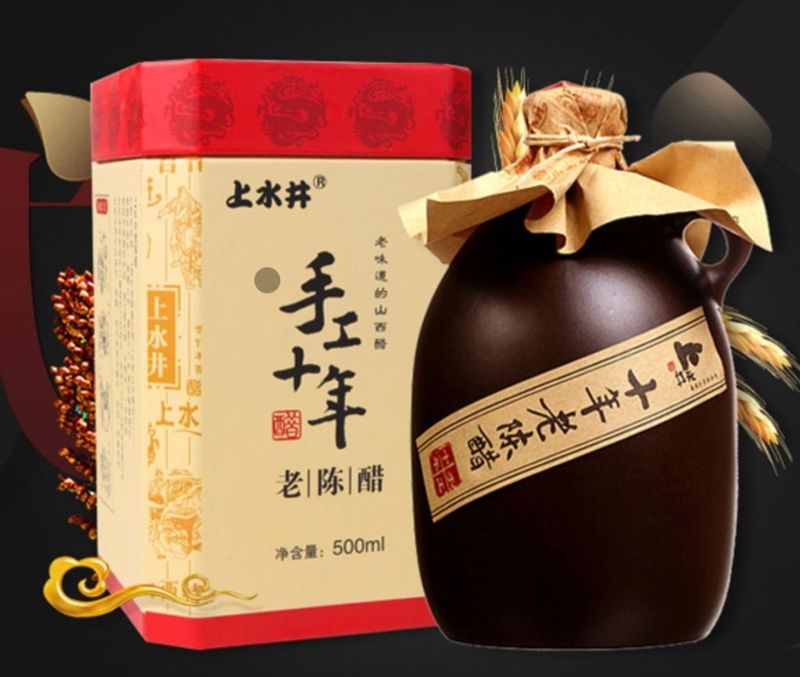
“10 years old vinegar, hand-made”.
The aged vinegar sold in China will mark the year of production like wine.
From the point of view of the shape of the finished product, the aged vinegar brewed by grain is a dark reddish-brown, opaque liquid with a strong complex aroma on the base of acetic acid. This is a completely different concept from the light-colored, transparent, sour liquid sold by many Chinese supermarkets-either unaged rice vinegar popular in China’s southern coastal areas or white vinegar blended directly with acetic acid.
As for the difference between the two tastes, it is basically the difference between vodka and traditional Chinese spirits such as Maotai: vodka (whether corn brewing or alcohol blending) is a good choice if you want to get drunk or mix cocktails; but if you want a wine to play a leading role in tasting complex tastes, Maotai is worth a try. The same is true for different kinds of Chinese vinegar: if you want to add sour taste without affecting the taste and color of the ingredients, you can choose rice vinegar or white vinegar; but if you want to add a special flavor with a sour tone that you have never seen before, then the old aged vinegar is probably not disappointing.
As a result, an interesting question arises: what kind of Chinese cuisine can give full play to the full effect of aged vinegar?
To answer this question, we need to open the map of China and find a province that is quite strange to most foreigners:
Shanxi.
How to eat Old Aged Vinegar correctly?
As one of the nearest provinces to Beijing, the number of Shanxi people who come to Beijing every year to look for work and development opportunities far exceeds the expectations of most outsiders-after all, regardless of climate, environment, or living habits, Shanxi native residents will hardly feel unaccustomed to living in Beijing, and Beijing is undoubtedly a better place for Shanxi’s younger generation to struggle than Shanghai and Shenzhen, where are farther south.
However, even if the appearance and speech are the same, some simple techniques to distinguish between Shanxi outsiders and Beijing locals are still very effective: one of the most direct ways is to serve a plate of sweet and sour dishes in a Beijing restaurant– such as pot-stuffed meat– if you see someone cheerfully pick up chopsticks and dabble in them, and make it clear that they don’t resent the sweet and sour taste, then it goes without saying that they don’t have an aversion to sweet and sour taste. This is probably a native of Shanxi who has not forgotten the taste of his hometown.
Yes, as the birthplace of Chinese old vinegar, the native people of Shanxi love that kind of complex and delicate sour flavor most. The sweet and sour tastes of other regions cannot satisfy these diners from the hometown of vinegar.
In previous articles by PandaYoo, we have seen Beijing copper hot pot, a wonderful meat-rinsing dish, but in fact, copper pot is also very popular in Shanxi, but after opening the lid this time, the ingredients presented in front of us are completely different:
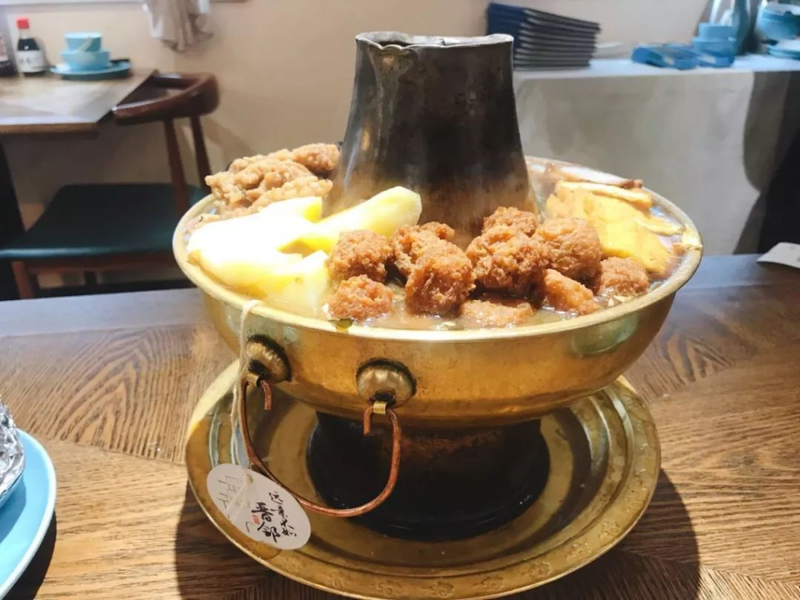
Dry Hot Pot
The copper pot is still the same copper pot, but this time it is no longer the boiling water waiting for the tender meat, but a whole pot of steaming, well-cooked ingredients-fried potatoes, tofu, balls and sliced roast meat, buried underneath, there are neatly placed cabbages and noodles, as well as mushrooms such as Flammulina velutipes and fungus. This is a very popular New year dish, dry hot pot(旱火锅), which is very popular in Shanxi.
From the point of view of the ingredients, dry hot pot is indeed a good dish for the whole family to share on a deep cold winter night. However, compared with other Chinese local hot pot previously introduced by PandaYoo, the dry hot pot has very little base soup, and it is not an elaborate stock (in fact, it is also quite common for ordinary families to use white water as the bottom soup when making this hot pot), and even before lifting the lid of the whole dish, only a little salt is added to the seasoning-so this kind of light dish is similar to “white water cooking”. How on earth should it be seasoned?
It’s time for the old aged vinegar to come on stage.
Lift the lid of the hot pot and sprinkle it with a layer of aged vinegar. With the steaming heat, the smell of sour aroma rises instantly; the appetite of the diners sitting around the hot pot is immediately activated. Holding out chopsticks to pick up a piece of roast meat, the rich sour taste embellished on the thick fat, the soft texture burst between the teeth, swallowed without any greasy, from lips and tongue to stomach bag, leaving us only the pure pleasure of satisfying appetite.
Yes, this is the core effect of old aged vinegar as a condiment: effectively eliminate the side-effect of greasy on appetite threshold, prolong the arrival of fullness, so that we can enjoy the pleasure of eating fat more comfortably.
This may be why to this day, dry hot pot is still the cooking of family gatherings, rather than the core reason for “eating for one person” daily dishes: it is not difficult to eat a whole pot of roast meat and balls alone under the influence of aged vinegar, but your calorie intake will significantly exceed the limit.
Of course, apart from a hot pot, the use of old aged vinegar in Chinese cuisine is much richer than expected:
Remember when it was mentioned earlier that people in Shanxi were hesitant to talk about the sweet and sour dishes in Beijing restaurants? The most direct reason is that the popular sweet and sour taste in Beijing mainly depends on the distiller’s grains, or the seasoning vinegar used is not as delicate as the local aged vinegar in Shanxi. The end result is that in the eyes of the people of Shanxi, the sweet and sour dishes in Beijing are only a thin “sweet and sour” taste, which completely deviates from the original meaning of the “sweet and sour” taste.
In fact, the result of this “deviation from the original meaning” is not just a difference in taste. For example, in the eyes of many Beijing locals, sweet and sour carp (which can even be extended to the four major domestic fish series in China) is not easy to cook. It’s not as easy as braising directly.
But for people in Shanxi, sweet and sour is the most standard practice of carp, and there is basically no one-the delicate taste of sour is only one side, and more importantly, old aged vinegar can easily suppress the fishy smell of freshwater fish. In Shanxi, it does not require particularly complex cooking skills to make sweet and sour carp that can be served on the table. But if you use other vinegar, things will be much more difficult.
By the way, in addition to being a seasoning, as a dipping sauce, the unique taste of aged vinegar also makes it a treasure in the mouth of glutton: The simplest example is undoubtedly dumplings.
Unlike Japanese fried dumplings as a side dish, the mainstream Chinese habit of eating dumplings is always boiled, and dumplings are usually filled with vinegar. It is not until it is cooked out of the pot that the diner will pour a pile of vinegar and eat it slowly. Fastidious diners all understand that old aged vinegar is the perfect match for dumplings. Dumplings with rice vinegar and white vinegar are pure nonsense, expect them to enhance taste and color, it is better to replace them with soy sauce.
So, since mature vinegar has a long history as a condiment and does have unique taste advantages, why does it not have an imaginary influence in the international and even Chinese local cuisine industry?
This has to start with the local vinegar industry in Shanxi.
The mature vinegar, which can’t break the circle.
As an important condiment that can effectively improve the taste of Chinese food, especially northern cuisine, traces of Shanxi aged vinegar can be found everywhere on China’s e-commerce platforms and supermarket shelves.
On the other hand, different regions have different tastes, so that Shanxi aged vinegar with different flavor details can find an audience, but on top of this, judging from the overall response of the market, aged vinegar brands that are more suitable for the taste of the Chinese public and are obviously more well-known can be screened out, to give a few examples:
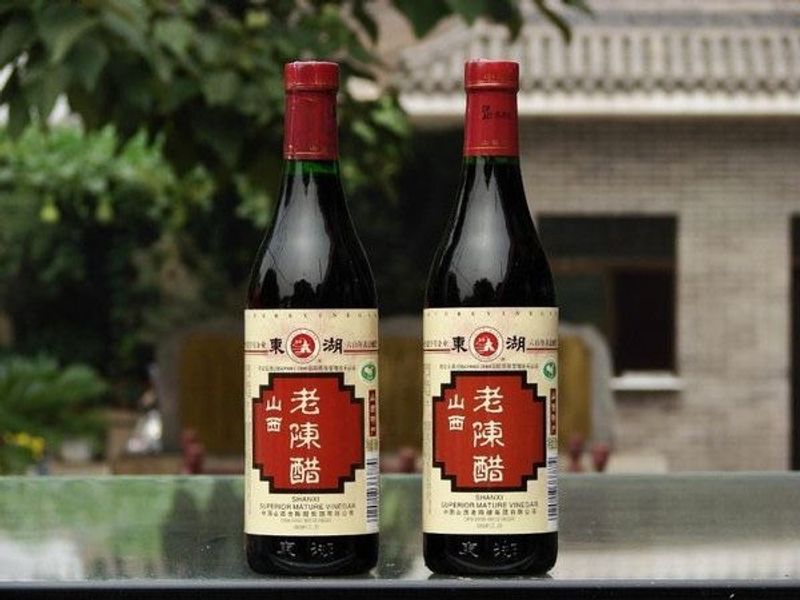
1. East Lake vinegar
The popular local brand of household vinegar in Shanxi, with its low price and expected taste, has become one of the mainstream choices for many Shanxi families, especially the younger generation, to start a partnership for cooking. The overall taste is regular, but it can basically meet the needs of the daily diet, from dipping to flavoring.
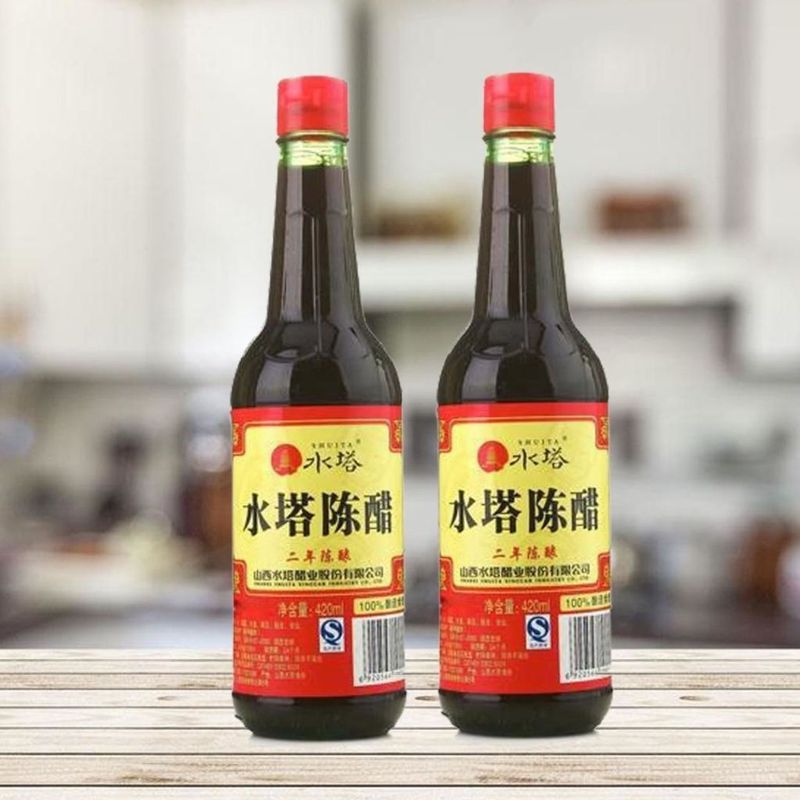
2. Water tower aged vinegar
Compared with the local market in Shanxi, this brand of old aged vinegar seems to be more popular in other provinces, from restaurants in Shanxi provinces such as Shaanxi, Henan, and Hebei, to chain convenience store shelves in Beijing and Shanghai. We can all see this vinegar.
However, although the promotion effect is good, the actual taste (especially the cheap version) is really indescribable, and for diners accustomed to the complex taste of authentic aged vinegar, the experience of adding pigment to white vinegar is of course unacceptable. In short, if you want to try the taste of old vinegar through this brand, remember not to buy a bargain.
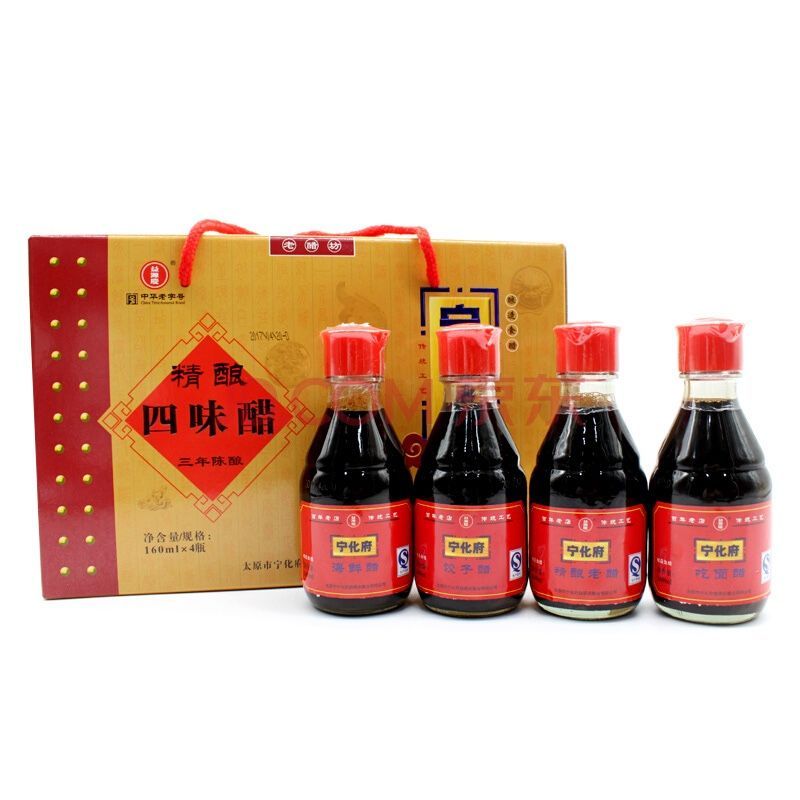
3. Ninghua Fu aged vinegar
If you ask local people in Shanxi, “what kind of aged vinegar is suitable for giving as a gift”, nine times out of ten, the answer will be this brand. As a representative of the early development from a small workshop to a large-scale production enterprise, the product quality of Ninghua Fu is quite good-as long as you try not to touch the cheapest one. Of course, don’t buy the most high-end products that cost thousands of yuan.
However, even with these brands that meet the standards of healthy food production, if you ask the local glutton in Shanxi about what brand of old aged vinegar is “authentic”, the answer is likely to be unexpected:
“The aged vinegar in bulk in the small workshop in the grocery store downstairs is the most authentic!”
The reason is simple:
As introduced at the beginning, aged vinegar was born in folk workshops, and for a long time in the past, family workshops handed down from generation to generation have developed an exclusive process that “does not allow outsiders to inherit”, bringing unique tastes of their own styles.
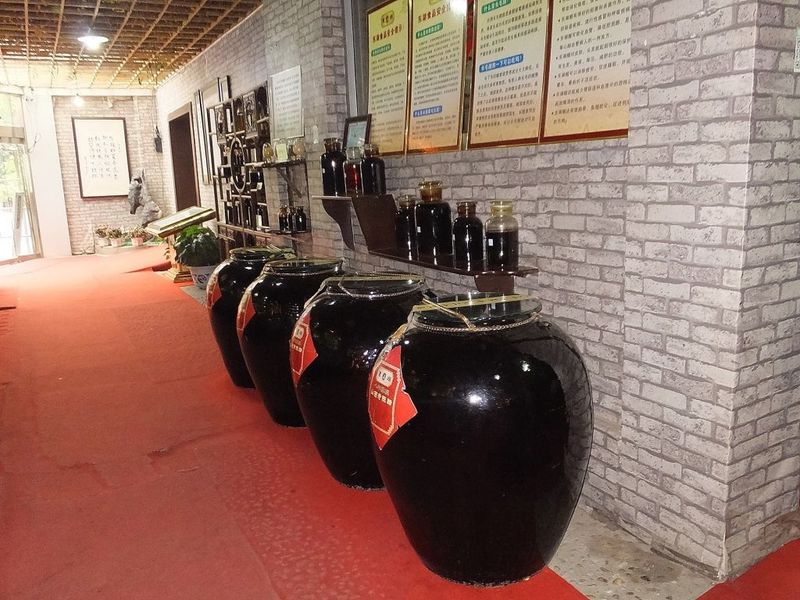
Vinegar jar, a tool for brewing aged vinegar.
Until the beginning of the 21st century, this kind of hand-made vinegar from “private brewing” workshops still represented the taste loved by many people in Shanxi. In contrast, for the sake of cost control and other complex factors, mass-produced aged vinegar is often much worse in flavor than “private brewing” aged vinegar, which is made by individual workshops and does not even have complete packaging.
For many people in Shanxi, aged vinegar in bulk is the real taste of hometown. As for the well-packaged vinegar of large factories on supermarket shelves, many of them are deceiving outsiders.
By the way, some Shanxi people who have left their hometown to struggle in other cities have indeed brought the craftsmanship of Shanxi aged vinegar from their hometown to other places, but the nature of private brewing in the workshop has not changed with it. Therefore, when rice vinegar from Jiangsu Province occupied the kitchens of almost all households in China through large-scale factory production, Shanxi aged vinegar stayed in the “hometown flavor”.
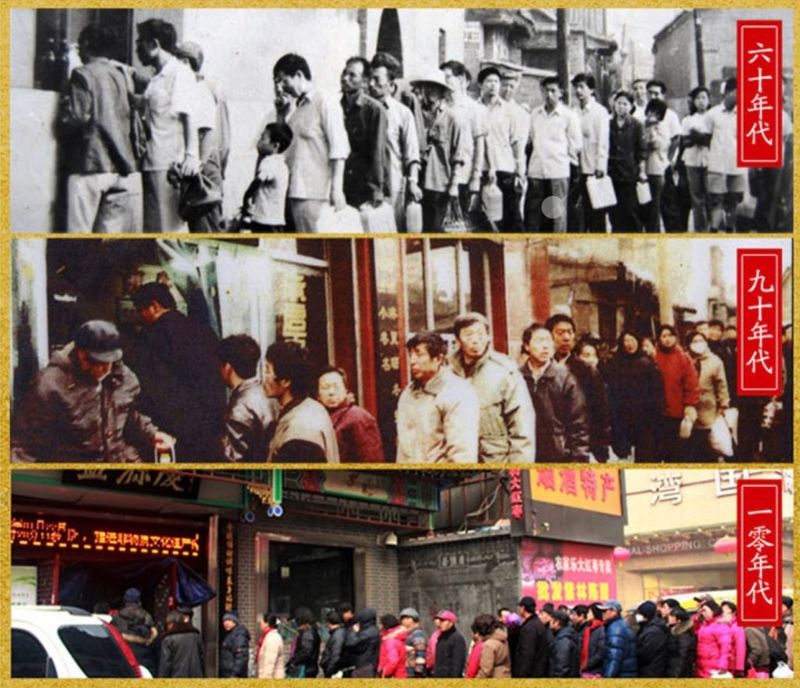
People queued up to buy old vinegar from Ninghua Fu in the 1960s, 1990s and 2010s.
After all, vinegar is different from wine after all. Some people collect fine wine, but few collect vinegar. Most people use vinegar only to provide a sour taste for the dishes. They only appreciate the flavor of the dishes, not the vinegar itself.
Of course, the relevant local institutions in Shanxi will certainly not turn a blind eye to this current situation. In the second decade of the 21st century, more and more local privately brewed aged vinegar began to be unearthed by relevant government departments. Regularized packaging is introduced into the market on the premise of maintaining the characteristics of the process as much as possible. However, as a typical coal resource-based province, the local economic development of Shanxi has not been satisfactory in the past 30 years, and the promotion of “regularization of private brewing” of aged vinegar has been going on, but the result is not satisfactory.
Till today, it is still not easy to buy industrially produced good-tasting old aged vinegar in Taiyuan, the capital of Shanxi province. After all, it is very difficult to strike a balance between “hometown flavor” and “industrial mass production”.
In fact, just recently, the China Federation of Light Industry and the China Light Food Industry Management Center jointly awarded Zhenjiang City, Jiangsu Province the national title of “vinegar Capital of China“. In response to this news, many self-media have worked very hard to come up with headlines such as “Jiangsu wins, Shanxi people are not convinced“, but the vast majority of reports on this incident fall on the fulcrum of industrial scale and market influence. as for the real taste of mature vinegar, no one mentioned it, no one knew it.
The Shanxi aged vinegar which can not get out of the threshold of private brewing represents a dilemma for many traditional Chinese commodities in the face of the new trend of economic development. It is still unknown when this dilemma will be improved.
- Author:NotionNext
- URL:https://pandayoo.com/2020/11/19/why-is-the-old-vinegar-from-shanxi-china-different
- Copyright:All articles in this blog, except for special statements, adopt BY-NC-SA agreement. Please indicate the source!